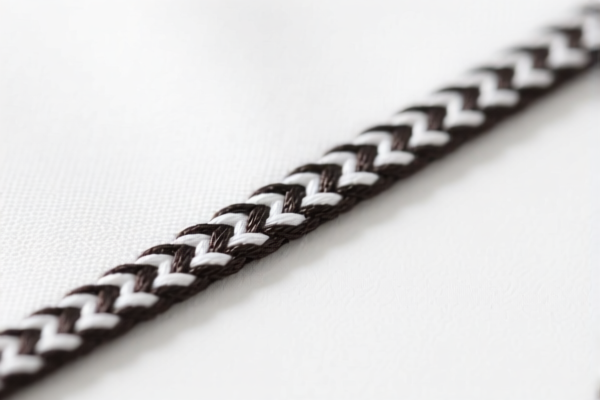| HS Code | Official Doc | Tariff Rate | Origin | Destination | Effective Date |
|---|---|---|---|---|---|
| 8539100010 | Doc | 57.0% | CN | US | 2025-05-12 |
| 8539490040 | Doc | 57.4% | CN | US | 2025-05-12 |
| 9013101000 | Doc | 52.4% | CN | US | 2025-05-12 |
| 9013200000 | Doc | 55.0% | CN | US | 2025-05-12 |




Infrared Light Device
An infrared light device utilizes infrared radiation to deliver energy for various applications, primarily therapeutic and diagnostic. Infrared radiation falls within the electromagnetic spectrum, between visible light and microwaves, and is experienced as heat.
Material
Infrared light devices employ diverse materials, dependent on the specific wavelength and application. Common components include:
- Infrared Emitters: These are the core of the device and can be:
- Incandescent Lamps: Traditional, broad-spectrum emitters, less energy-efficient.
- Halogen Lamps: More efficient than incandescent, producing a brighter, focused beam.
- LEDs (Light Emitting Diodes): Increasingly common, offering narrow spectrum emissions, long lifespan, and energy efficiency. Specific semiconductor materials dictate the wavelength (e.g., gallium arsenide for near-infrared).
- Ceramic Emitters: Used for longer wavelength infrared, often in heating applications.
- Housing: Typically plastic (ABS, polycarbonate) or metal (aluminum) for durability and heat management.
- Optical Components: Lenses or reflectors to focus or diffuse the infrared radiation.
- Control Systems: Electronic circuits for power regulation, wavelength selection, and timer functions.
Purpose
The primary purpose of infrared light devices is to deliver targeted energy. This energy is used for:
- Therapeutic Applications: Stimulating healing, reducing pain, and improving circulation.
- Heating: Providing warmth for comfort or specific processes.
- Diagnostic Applications: Measuring temperature (thermography) or detecting variations in blood flow.
- Communication: Remote controls and data transmission.
Function
Infrared light devices function by emitting electromagnetic radiation in the infrared spectrum. This radiation is absorbed by tissues, converting it into heat energy.
- Photobiomodulation: In therapeutic devices, specific wavelengths stimulate cellular processes, promoting tissue repair and reducing inflammation.
- Thermal Effects: Heat increases blood flow, relaxes muscles, and reduces pain.
- Detection: Infrared sensors detect emitted or reflected radiation, allowing for temperature measurements or object detection.
Usage Scenarios
- Pain Relief: Muscle soreness, joint pain (arthritis), back pain.
- Wound Healing: Accelerating tissue regeneration in cuts, burns, and ulcers.
- Cosmetic Procedures: Skin rejuvenation, wrinkle reduction, cellulite treatment.
- Physical Therapy: Reducing inflammation and promoting recovery after injury.
- Veterinary Medicine: Treating wounds and promoting healing in animals.
- Remote Controls: Operating televisions, air conditioners, and other electronic devices.
- Thermography: Medical diagnostics, building insulation analysis, and night vision.
Common Types
- Near-Infrared (NIR) Devices (650-900 nm): Penetrate deeper into tissues, often used for pain relief, wound healing, and cosmetic applications. LED-based devices are common.
- Mid-Infrared (MIR) Devices (3,000-8,000 nm): Used for deeper heating and diagnostic applications.
- Far-Infrared (FIR) Devices (8,000-30,000 nm): Primarily used for warming and detoxification. Ceramic emitters are typical.
- Infrared Lamps: Broad-spectrum emitters for general heating and pain relief.
- Infrared Saunas: Utilize FIR emitters to heat the body.
- Pulse Oximeters: Utilize infrared light to measure blood oxygen saturation.
- Thermometers: Measure temperature based on infrared radiation emitted by objects.
- Remote Controls: Use infrared LEDs to transmit signals.
The declared goods are infrared light devices. Based on the provided information, these fall under the category of electrical filament or discharge lamps, including sealed beam lamp units and ultraviolet or infrared lamps; arc lamps; light-emitting diode (LED) light sources; parts thereof.
The following HS codes are relevant:
-
8539100010: Electrical filament or discharge lamps, including sealed beam lamp units and ultraviolet or infrared lamps; arc lamps; light-emitting diode (LED) light sources; parts thereof: Sealed beam lamp units Under
15.24 cm: For vehicles of subheading 8701.21, 8701.22, 8701.23, 8701.24 or 8701.29 or heading 8702, 8703, 8704, 8705 or 8711.- 85: Electrical machinery and equipment; parts thereof. This chapter covers a broad range of electrical devices.
- 39: Lamps and lighting fittings; electrical lamps and tubes. This heading specifically focuses on lighting solutions.
- 100010: This subheading denotes sealed beam lamp units under 15.24 cm, intended for use in vehicles (subheadings 8701.21-8701.29) or specific vehicle types (headings 8702, 8703, 8704, 8705, 8711).
-
9013101000: Lasers, other than laser diodes; other optical appliances and instruments, not specified or included elsewhere in this chapter: Telescopic sights for fitting to arms; periscopes; telescopes designed to form parts of machines, appliances, instruments or apparatus of this chapter or section XVI: Telescopic sights for rifles: Not designed for use with infrared light.
- 90: Optical, photographic, cinematographic, measuring, checking, precision, medical or surgical instruments and apparatus; parts and accessories thereof. This chapter covers a wide range of instruments.
- 13: Optical appliances and instruments. This heading focuses on specific optical devices.
- 101000: This subheading denotes telescopic sights for rifles that are not designed for use with infrared light.
Tax Rate Information:
- For 8539100010, the base tariff is 2.0%, with an additional tariff of 25.0%. After April 2, 2025, the additional tariff increases to 30.0%, resulting in a total tariff of 57.0%.
- For 9013101000, the base tariff is 14.9%, with an additional tariff of 7.5%. After April 2, 2025, the additional tariff increases to 30.0%, resulting in a total tariff of 52.4%.
Important Note: HS code 8539100010 specifically mentions sealed beam lamp units under 15.24 cm for vehicle use. HS code 9013101000 is for telescopic sights not designed for infrared light. Ensure the correct HS code is selected based on the device's specifications and intended use.
Customer Reviews
No reviews yet.